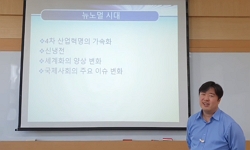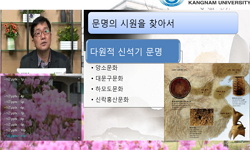This study compares the ship structure and salvaged relics of the Shinan-Ship(新安船) and the Cheonjuman Songdae Hae-Ship(泉州灣宋代海船) of China and examines the characteristics of the relics and the trade relations of East Asia in the 13t...
http://chineseinput.net/에서 pinyin(병음)방식으로 중국어를 변환할 수 있습니다.
변환된 중국어를 복사하여 사용하시면 됩니다.
- 中文 을 입력하시려면 zhongwen을 입력하시고 space를누르시면됩니다.
- 北京 을 입력하시려면 beijing을 입력하시고 space를 누르시면 됩니다.
https://www.riss.kr/link?id=T9039962
- 저자
-
발행사항
서울 : 건국대학교, 2003
- 학위논문사항
-
발행연도
2003
-
작성언어
한국어
- 주제어
-
KDC
911.0025 판사항(4)
-
DDC
951.9 판사항(21)
-
발행국(도시)
서울
-
기타서명
Study on the trade relations of East Asia viewed from marine archaeology -With Shinan Sea-bottom Relics
-
형태사항
245p. : 삽도 ; 26cm
-
일반주기명
부록 :p.204-234
참고문헌 :p.238-245 - 소장기관
-
0
상세조회 -
0
다운로드
부가정보
다국어 초록 (Multilingual Abstract)
This study compares the ship structure and salvaged relics of the Shinan-Ship(新安船) and the Cheonjuman Songdae Hae-Ship(泉州灣宋代海船) of China and examines the characteristics of the relics and the trade relations of East Asia in the 13th-14th century.
To approach these themes, this study compares the routes of East Asia and the Shinan-Ship, ship structure and relics of the Shinan-Ship and Cheonjuman Songdae Hae-Ship, classifies the loaded relics, relationship between the development of Chinese ships and trade and the aspects of trades developed centering around Ning-bo(寧波) of China, Yeseong port(禮成港) of Goryeo and Hakada port(博多港) of Japan in those days.
The route of ancient East Asia was mainly departed from North Sea Route and used the South Sea Route till the medieval period. Since then, South Island Route was mainly used according to the changes of political situation, but it was not activated due to a lot of dangerous factors. The ships sunken into Shinan Sea along the West Coast in frequent exchanges using these routes give the important materials to restore the history of those days. The route of the Shinan-Ship has a possibility that it has a considerable consistency with South Sea Route recorded at 「Sun-Hwa-Bong-Sa-Goryeo-Do-Gyeong(善和奉史高麗圖經)」 by Seo Gyeong of Song who visited Goryeo frequently.
The year of sinking of the Shinan-Ship was assumed on the basis of styles of potteries, coin and wooden tags. For instance, the coin of Won manufactured between 1308 and 1312, 'Jidaetongbo(至大通寶' and the epigraph on wooden tags on Jun. 2, 'Chi-Chia 3th year(至治參年:1323)' were the bases of assuming the period of sinking. The nationality of the Shinan-ship was obviously Chinese from its manufacturing technique and structure, but the crews on board were mostly Japanese. However, the captain and the crew driving the ship might be mixed with Chinese, Goryeo people and Japanese. Considering that wooden tags of the title 'Gangsa(綱司)' were found in the two ships, the subject of operating the ship was Chinese and 'Chi-Chai(至治)' was Chinese chronological era and Japan used the chronological era named 'Wonhyang(元享)' at that time and it means that the subject of operating the ship was Chinese because the wooden tags of the Shinan-Ship showed no the chronological era Wonhyang.
As a result of examining the ship structures of the two ships, it was revealed that the Shinan-ship was obviously manufactured in China. It is featured by Cheomjeo(尖底) type of Yonggol(龍骨) which was manufactured frequently in China at that time, coin and copper mirror placed with the Great Bear in the middle of Yonggol which was to pray for the well-being and safety traditionally in China. Cheonjuman Songdae Hae-Ship also had the same structure with the Shinan-Ship and it became the comparative material that it belonged to Chinese ship. It was confirmed through the comparison of relics that two ships were marine trade ships running Southeast Asia, Northeast Asia and the whole world and their major items included potteries, medicines, coins, etc.
Loaded relics on the Shinan-Ship are examined by classification and it is found that there were few relics from Goryoe and Japan, but it became important materials to confirm that there were Goryeo people and Japanese among the passengers. In particular, potteries and spoons of Goryeo relics -show the unique Goryeo. style to verify it. Wooden shoes with clogs, potteries and knife used by Japanese were mainly used in the ship.
The coins of 28 tons (about 8 million coins) were salvaged and as a result of analyzing them, contents of Cu, Pb and Sn were varied according to the times and the characteristics by the times can be examined. It was also confirmed that Chinese coins were imported from Goryeo and Japan and used for their economic life. 'Qing-yuan-lu(慶元路)' of metal relics was a decisive evidence to know the departure port of the Shinan-Ship. Wooden tags of wooden relics became the decisive materials to reveal the sinking year, lading and loaded articles of the Shinan-Ship. Jadan wood(紫檀木) was zelkova wood to make crafts and letter and pattern engraved on its surface were important materials to know their possessors. Relics related to plants were mainly medicines or edible plants. There was a possibility that medicine and aroma were transacted as trade items, but it might be used for emergency medicine or edible plants. Potteries were mostly made in the age of Song and Won in China. Chinese potteries were exported to Asia, Europe, Africa and Mediterranean regions as the special products of China from the 9t h-10th century to the 19th century and Chinese potteries of good quality was treated as the precious items in the world. In particular, the potteries from the era of Won found in the sea of Shinan informed that the marine trade was vigorous before and after the 14th century owing to the active trade policies.
The era of Song and Won achieved more developments in shipbuilding industry and resulted in the extension of trade by Chinese commercial ship. And the development of making ship and its technique was achieved and large-scaled deep-sea ships brought about a great development in the scale of trade, And in East Asia, the sailing in the period of Song and Won and marine trade activated the marine trade in East Asia as well as the Chinese trade.
Goryeo developed the trade with Song Won and Japan centering around yeseong port and major export item of Japan was coin since the mid-12th century through the examination of Hakada port, the center of the medieval trade in Japan. Major trade sea route in those days was Hakada port and private trade companies were established. Trade products were various and rich and the subject of trade was Song and Won's merchants to Japan from Song. It suggests that the operation of the Shinan-ship was used for the purpose of this trade.
As described above, the ship structure and salvaged relics from the Shinan-Ship and Cheonjuman Songdae Hae-Ship are very important materials to examine the scale of trade in those days as well as verifying the trade relations of East Asia positively.
목차 (Table of Contents)
- 목차
- Ⅰ. 序論 = 1
- 1. 硏究目的 = 1
- 2. 硏究範圍 및 方法 = 2
- 3. 旣往硏究 檢討 = 4
- 목차
- Ⅰ. 序論 = 1
- 1. 硏究目的 = 1
- 2. 硏究範圍 및 方法 = 2
- 3. 旣往硏究 檢討 = 4
- Ⅱ. 新安船과 古代 동아시아 海上航路 = 9
- 1. 先史時代의 海上航路 = 10
- 2. 歷史時代의 海上航路 = 13
- 3. 新安船의 航路 = 28
- 4. 新安船의 海洋環境 = 38
- 5. 新安船의 年代와 出港地 = 39
- 6. 新安船의 國籍 = 42
- 7. 小結 = 45
- Ⅲ. 新安船과 泉州灣宋代海船의 構造 및 引揚遺物 比較 = 47
- 1. 新安海底發掘 背景 및 意義 = 47
- 2. 新安船의 構造 = 50
- 3. 泉州灣宋代海船의 構造와 引揚遺物 考察 = 54
- 4. 小結 = 64
- Ⅳ. 新安船과 宋元時期의 造船業 發達 = 66
- 1. 船舶製造 技術의 發達 = 66
- 2. 中國船舶의 '料'에 관한 解釋 = 71
- 3. 商船의 大型化와 航海技術의 發達 = 80
- 4. 小結 = 88
- Ⅵ. 新安船 積載遺物의 內用과 特性 = 90
- 1. 高麗遺物과 日本遣物 = 93
- 2. 金屬遺物 = 95
- 3. 石製·琉璃玉製品·骨製遺物 = 122
- 4. 木製遺物 = 129
- 5. 植物關係 遺物 = 153
- 6. 陶磁器 = 165
- 7. 小結 = 167
- Ⅵ. 新安船과 동아시아 13~14世紀 國際貿易 = 170
- 1. 高麗의 13~14世紀 海外貿易 = 170
- 2. 宋元時期 海外貿易 政策 = 177
- 3. 宋元時期 海上勢力과 商船의 活動範圍 = 181
- 4. 日本 中世 貿易의 中心 博多港 = 188
- 5. 小結 = 195
- Ⅶ. 結論 = 197
- 附錄 = 204
- 附錄 1 그림 = 205
- 附錄 2 船舶用語 解說 = 232
- ABSTRACT = 235
- 參考文獻 = 238












